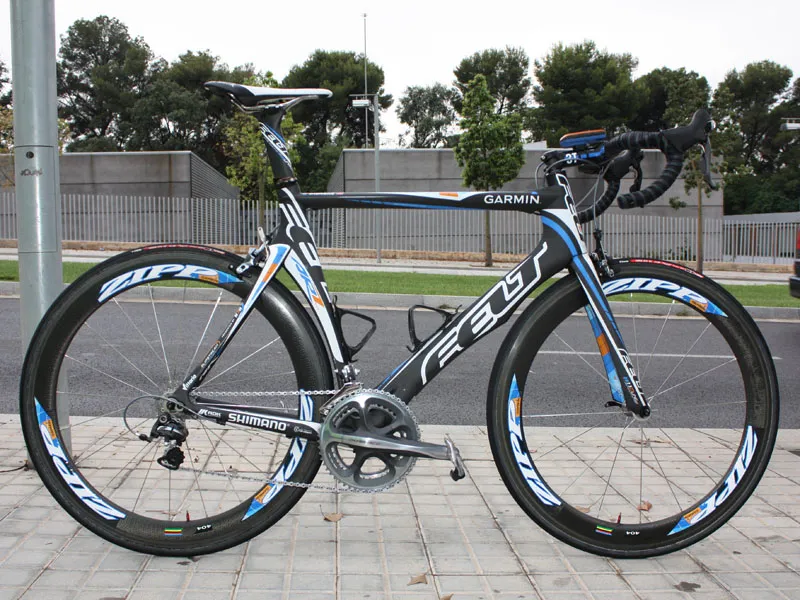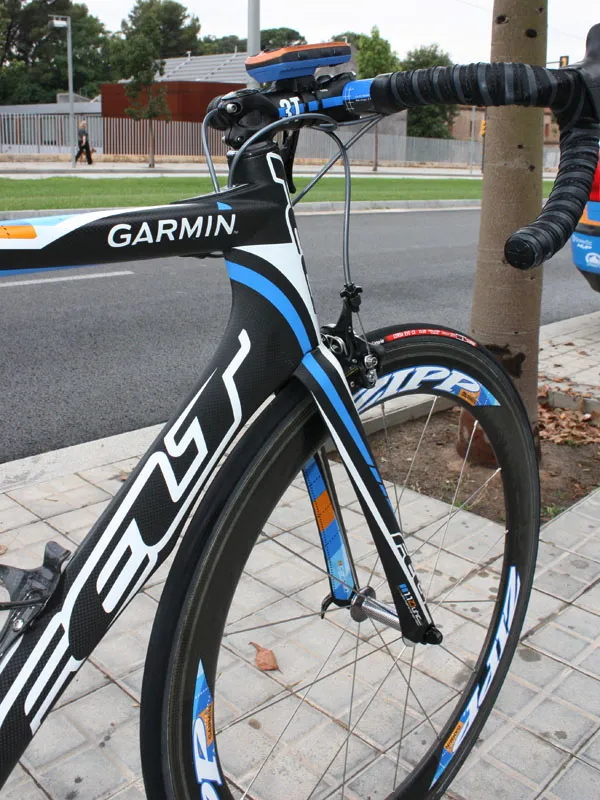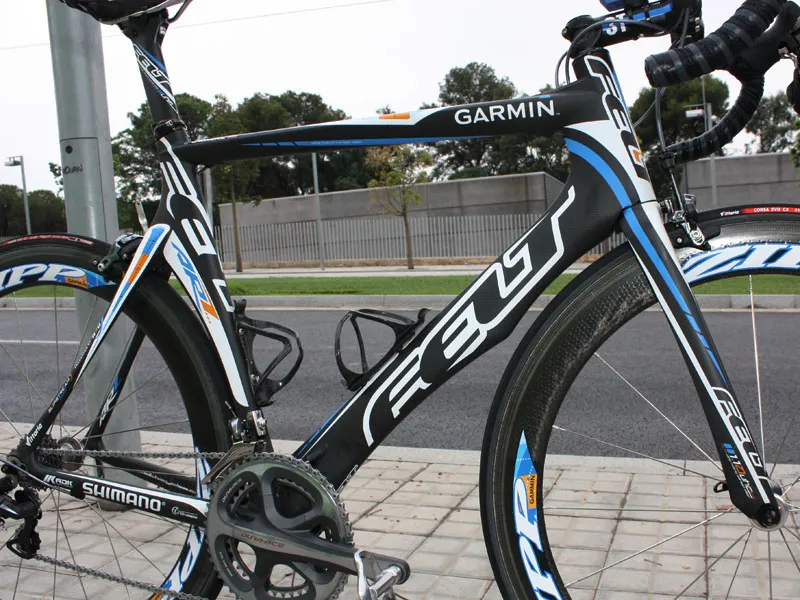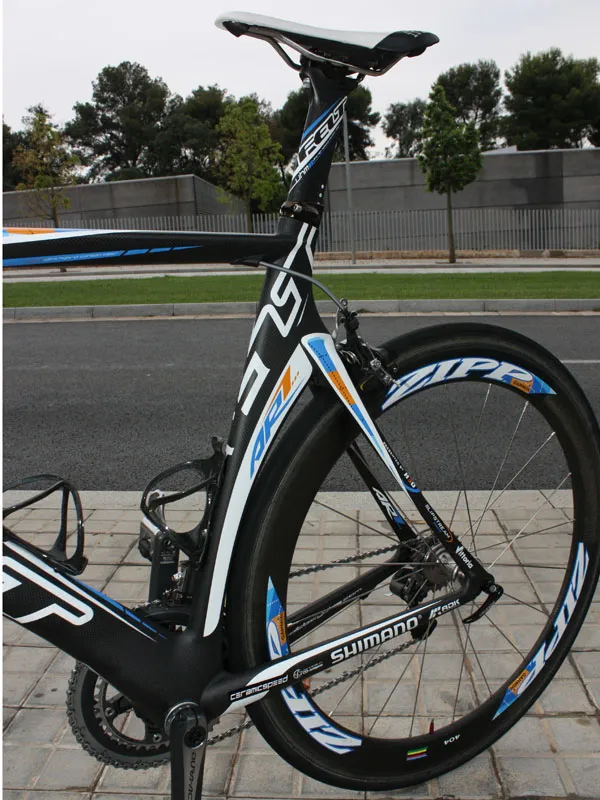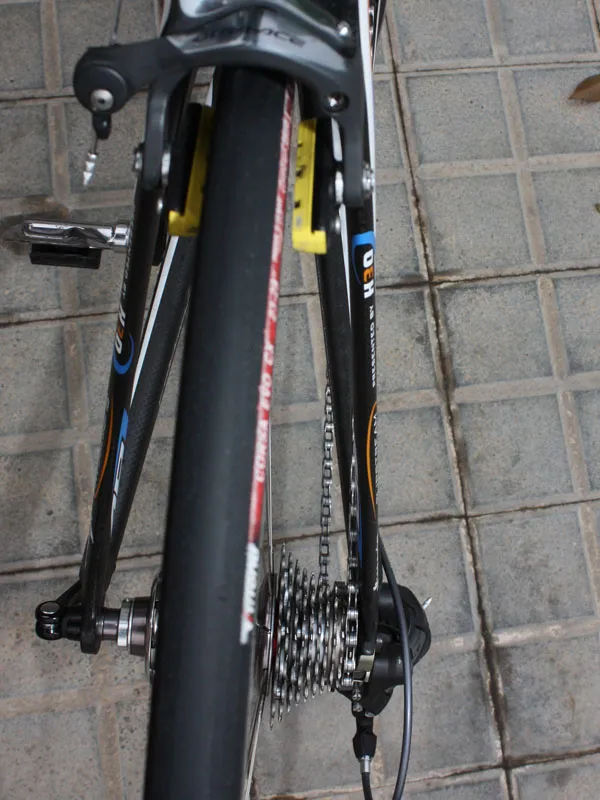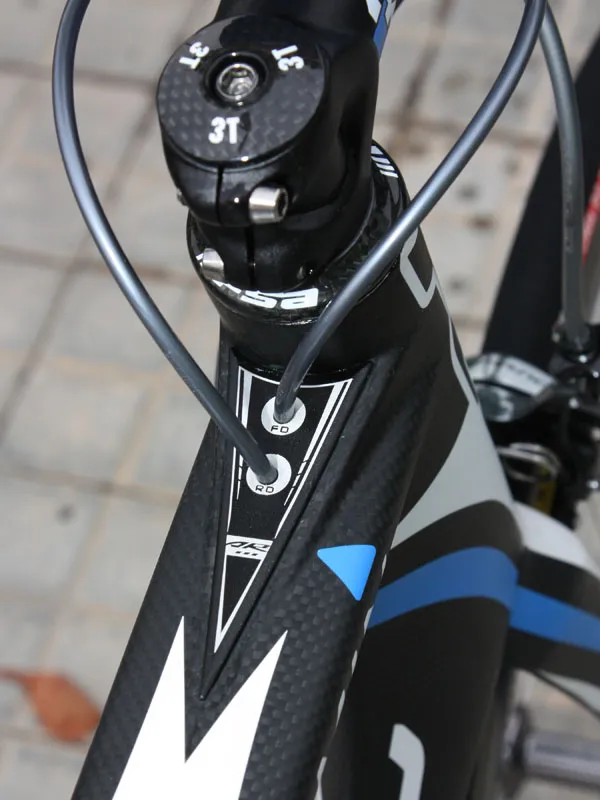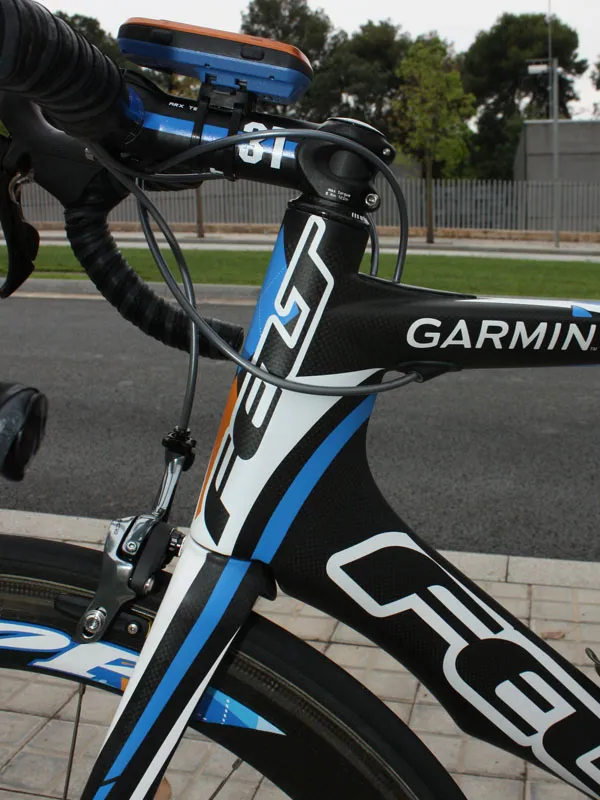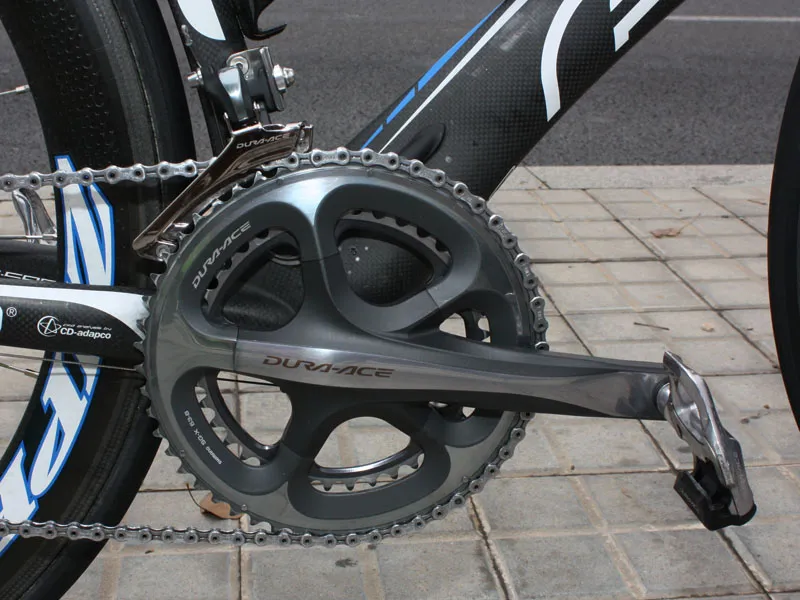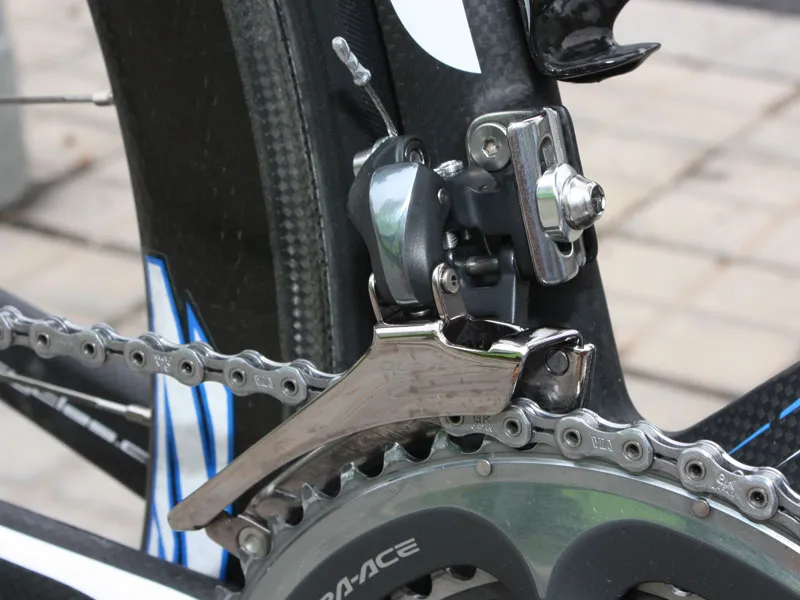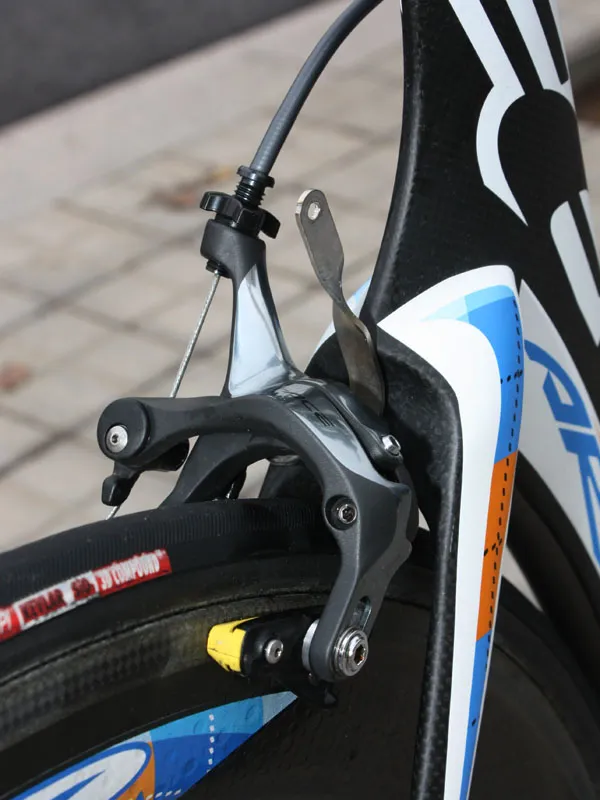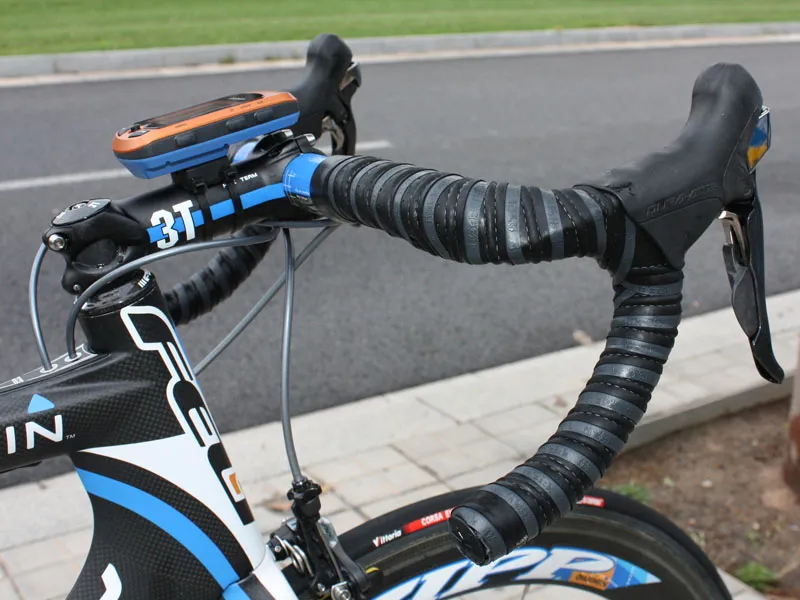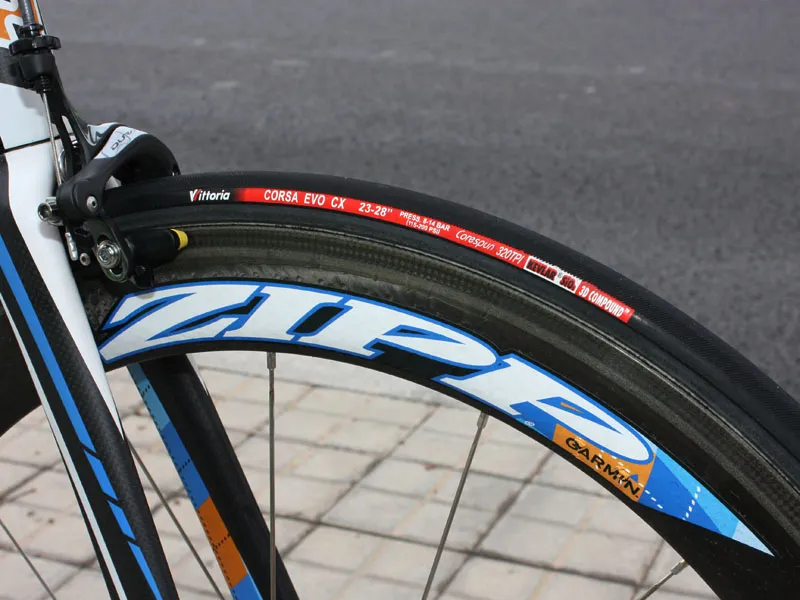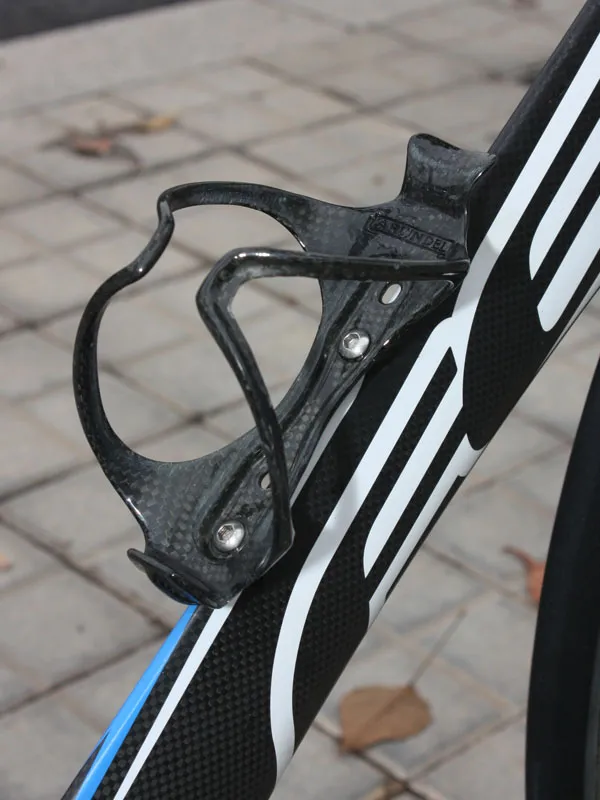David Zabriskie (Garmin-Slipstream), four-time US national time trial champion and prologue winner of the 2005 Tour de France, has chosen the Felt AR aero road bike for road stages of the 2009 Tour. BikeRadar's technical editor James Huang snapped some pics and took some measurements.
Zabriskie is no stranger to the benefits of aerodynamics. In fact, his exceptionally slippery body position in races against the clock so epitomises the ideal that former team bicycle sponsors Cervélo actually commissioned a life-sized model of him for use in their wind tunnel testing.
Zabriskie doesn't limit his use of low-drag equipment to time trials, though. While the majority of his teammates have opted for the tried-and-true F1 platform from team sponsors Felt, the Utah resident has instead occasionally reached for the more aerodynamic AR for road stages.
Indeed, relative to the AR, the F1 SL is lighter and the F1 Sprint is stiffer, making them the respective go-to choices for general classification contenders Bradley Wiggins and Christian Vande Velde, and team sprinter Tyler Farrar.
But according to Felt road brand manager Dave Koesel, new internal moulds for the AR have narrowed the weight gap – a bare AR1 frame is now said to be just 1,050g – while also improving overall frame rigidity. More importantly, the AR's reduced drag is claimed to save up to a minute per hour at typical race speeds.
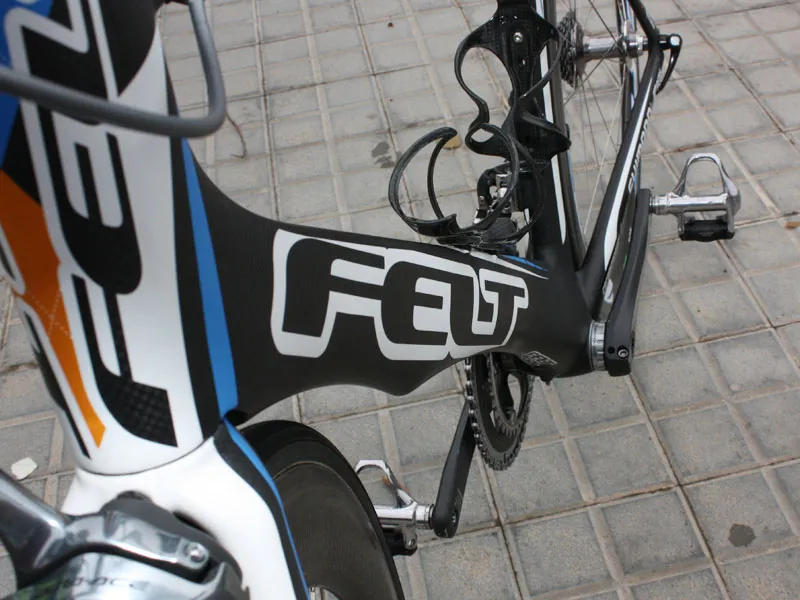
Many of the frame's slippery features are borrowed from the company's dedicated time trial machine, the DA. The narrow deep-section down tube is slightly lowered and includes a shallow cutout to smooth airflow coming off of the front wheel, the seat tube shields the rear wheel from the bottom bracket shell to the seatstay bridge, and aero profiles are also used for the wispy seatstays and the straight 1-1/8in head tube.
More drag reduction comes from the matching fork with its neatly integrated crown and aero profile blades. The cables are internally routed as well, with both derailleur lines entering the top tube just aft of the stem and the rear brake running through the top tube.
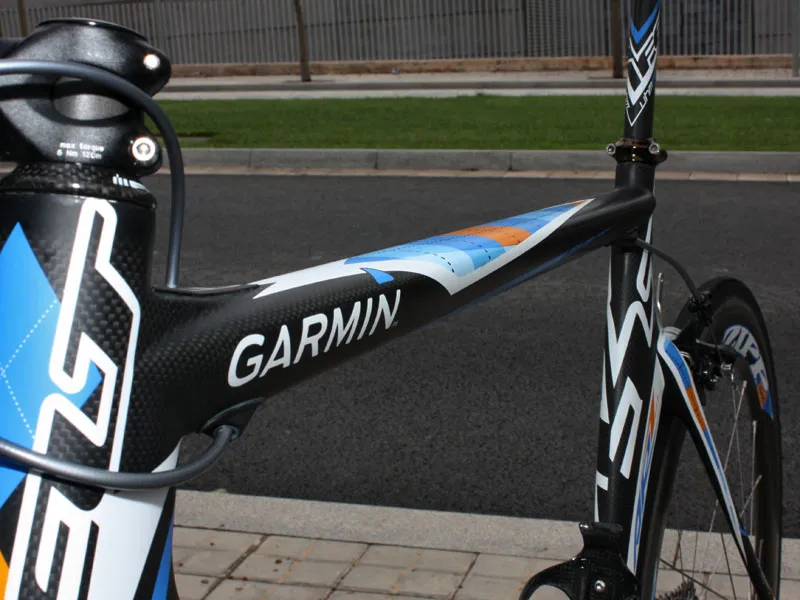
Otherwise, Zabriskie's bike is standard team-issue. Shimano Dura-Ace 7900 componentry is used throughout, 3T provide the ARX Team stem and Ergosum Team handlebar, Fizik handle the seating duties in the form of an Antares k:ium saddle, and Zipp provide the usual array of carbon wheelsets – in this case, the versatile 404 tubular complete with ceramic bearings.
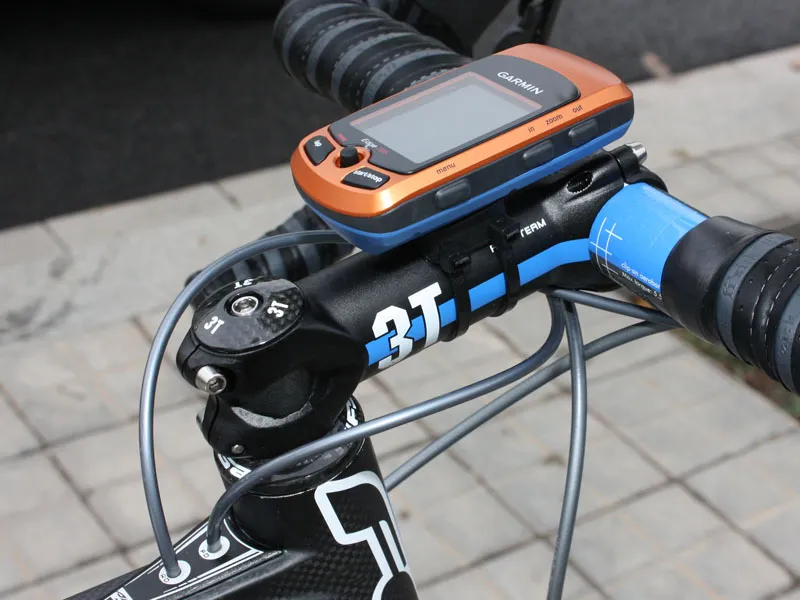
Up front, a Garmin Edge 705 provides upcoming stage information and also displays power data when Powertap-equipped rear wheels are used. Total weight as pictured is 7.21kg (15.9lb).
Okay, so if the AR is slightly heavier and softer than the F1 but still faster (at least outside of the big mountains), that begs the question: why aren't more Garmin-Slipstream riders using it?
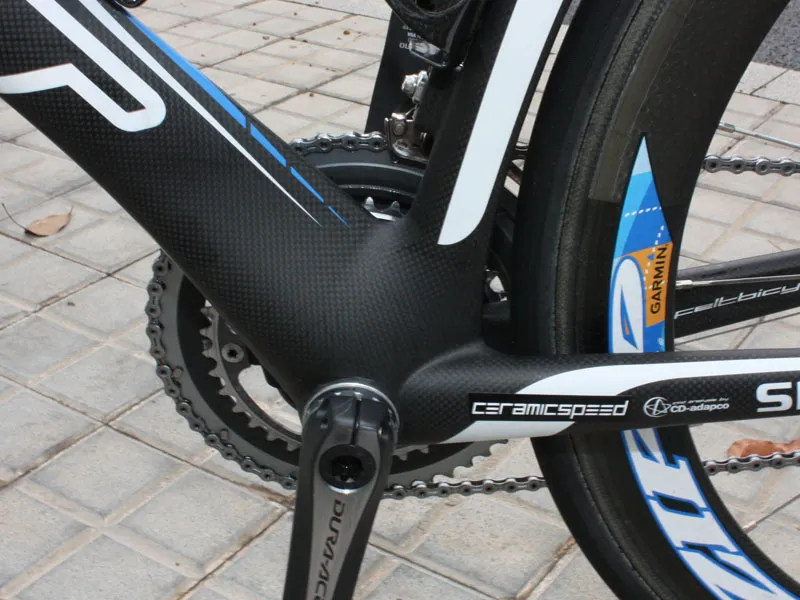
According to Koesel: "We didn't finish the new AR1 frames until right before the Giro and guys like [David] Millar, Vande Velde and Wiggins were not going to risk adaptation injuries on a new bike."
He suggested that the situation is likely to change, and a stiffer variant may be developed based on rider feedback. "I think in 2010 you'll see 40 percent of the guys on the AR, 40 percent on F and 20 percent on Z," Koesel said.
"[Will] Frishkorn, [Timmy] Duggan and [Chris] Sutton are all using the AR1 now and I think [Julian] Dean and Farrar will use it more next year as well. It isn't quite as stiff as the F1 Sprint, so Farrar wanted to wait until after the Tour to do more testing to see if he'd prefer an 'AR1 Sprint'."
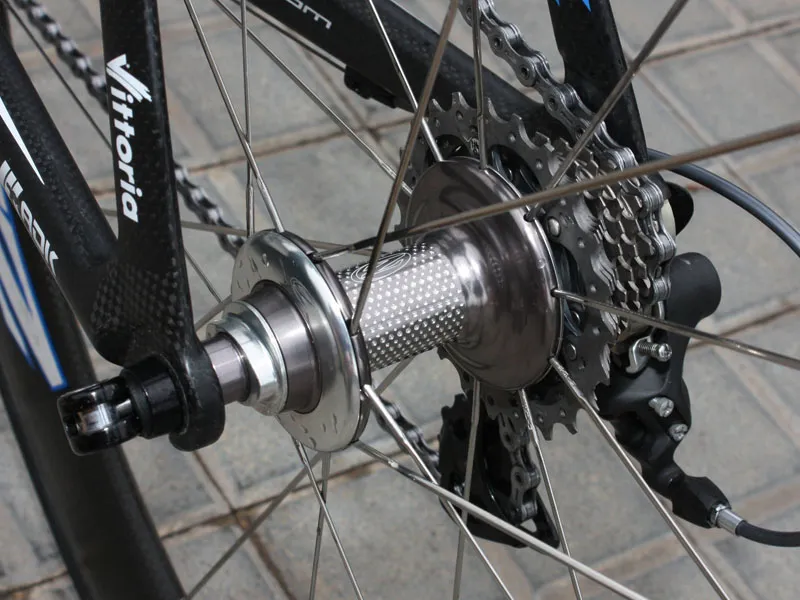
Garmin-Slipstream team physiologist Allen Lim offered up a simpler explanation as to why Zabriskie has decided to be an early adopter of the AR frame: "He thinks the aero bike rides better. That's all."
Complete bike specifications
- Frame: Felt AR Team Issue - 58cm
- Fork: Felt 1.1A
- Headset: FSA Orbit integrated
- Stem: 3T ARX Team, 120mm x -6º
- Handlebars: 3T Ergosum Team, 42cm (c-c)
- Bar tape: Fizik dual:tape
- Brake calipers: Shimano Dura-Ace BR-7900 w/ Swiss Stop Yellow King pads
- Brake levers: Shimano Dura-Ace STI Dual Control ST-7900
- Front derailleur: Shimano Dura-Ace FD-7900-F
- Rear derailleur: Shimano Dura-Ace RD-7900-SS w/ CeramicSpeed ceramic bearings
- Shift levers: Shimano Dura-Ace STI Dual Control ST-7900
- Cassette: Shimano Dura-Ace CS-7900, 11-23T 10-spd
- Chain: Shimano Dura-Ace CN-7900
- Crankset: Shimano Dura-Ace Hollowtech II FC-7900, 175mm x 53/39T
- Bottom bracket: Shimano Dura-Ace Hollowtech II SM-BB7900 w/ CeramicSpeed ceramic bearings
- Pedals: Shimano Dura-Ace SPD-SL PD-7810
- Wheelset: Zipp 404 carbon tubular w/ ceramic bearings
- Tyres: Vittoria Corsa EVO-CX tubular, 23mm
- Saddle: Fizik Antares k:ium
- Seatpost: Felt 3.1
- Bottle cages: Arundel Mandible
- Computer: Garmin Edge 705
Bike and rider measurements:
- Rider's height: 1.82m (6ft)
- Rider's weight: 70kg (154lb)
- Saddle height, from BB (c-t): 785mm
- Saddle setback: 95mm
- Seat tube length (c-t): 580mm
- Seat tube length (c-c):540mm
- Tip of saddle nose to C of bars (next to stem): 605mm
- Handlebar drop: 95mm
- Head tube length: 180mm
- Top tube length: 575mm (horizontal)
- Total bicycle weight: 7.21kg (15.9lb)
